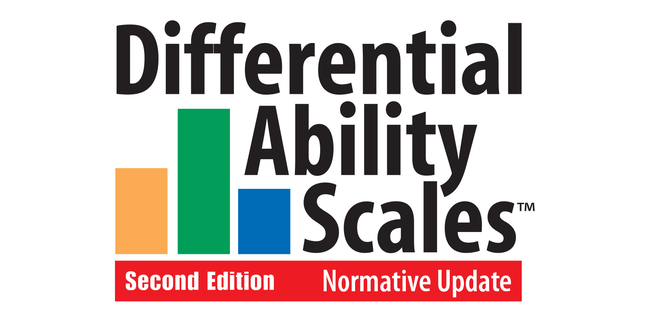The Differential Ability Scales™ (2nd ed., DAS™–II) is unique in that it goes beyond cognitive ability testing to give insight into how a child processes information. Developed for psychologists, this child-friendly test provides information that enables you to predict their likeliness to succeed in education and to craft appropriate interventions and/or recommendations for the classroom and home. With out-of-level testing and child-appropriate start points, this time-tested assessment gives you the speed and flexibility you need for children who may struggle with longer tests.DAS–II NU School-Age 2023 has officially launched. Order now.


Differential Ability Scales-II
DAS-II
The Differential Ability Scales™ (2nd ed., DAS™–II) is unique in that it goes beyond cognitive ability testing to give insight into how a child processes information. Developed for psychologists, this child-friendly test provides information that enables you to predict their likeliness to succeed in education and to craft appropriate interventions and/or recommendations for the classroom and home. With out-of-level testing and child-appropriate start points, this time-tested assessment gives you the speed and flexibility you need for children who may struggle with longer tests.DAS–II NU School-Age 2023 has officially launched. Order now.Choose from our formats
Trousses
Trousses de démarrage et trousses complètes, imprimées et numériques
4 options
Formulaires & rapports d'essai
Livrets, formulaires d'enregistrement, livrets de réponse, rapports d'utilisation et abonnements
8 options
Matériels de soutien
Manuels, livres de stimulation, articles de remplacement et autres matériaux
20 options
Training
Formations en présentiel, en virtuel et à la demande
2 options
Tous les produits
Tous les tests et matériaux proposés pour DAS-II
34 options
